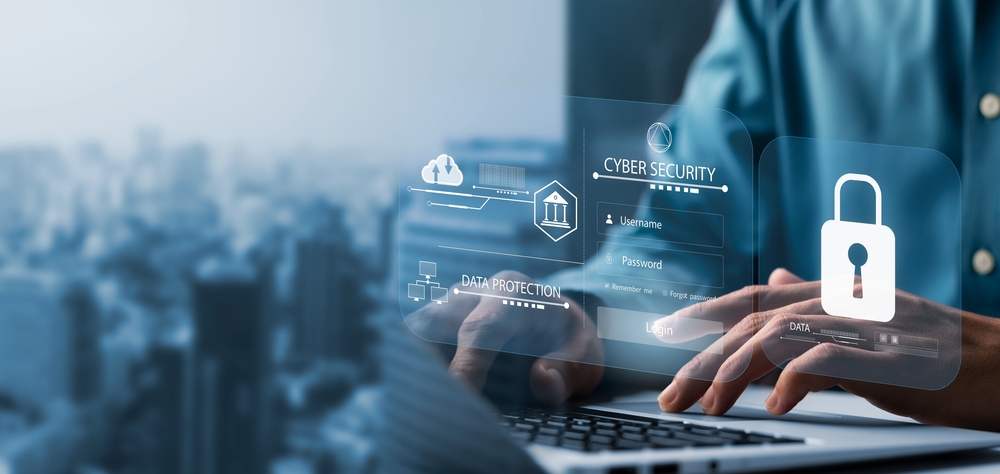The field of cybersecurity engineering has grown significantly over the past decade as more organizations recognize the need to invest in technology-based solutions to protect against cyber threats. As a result, there has been an increase in demand for cybersecurity engineers with the skills and expertise to develop and maintain secure systems. To become a successful cybersecurity engineer, it is important to have a deep understanding of computer systems and experience in software engineering, cryptography, network security, systems administration, and digital forensics. A good background in mathematics is also helpful as many aspects of cybersecurity engineering require mathematical algorithms. Cybersecurity engineers must also stay up-to-date on emerging cyber threats and industry best practices to ensure that their systems remain secure.
Introduction to Cyber Security Engineering
Cybersecurity engineering is the application of engineering principles and practices to the design, development, implementation, and management of secure computer systems. It involves a wide range of activities such as designing secure networks and authentication systems, developing cryptographic algorithms, writing secure code, analyzing system security risks, testing for system vulnerabilities, and implementing security controls. Cybersecurity engineers are responsible for ensuring that information systems are resilient in an environment where malicious actors are always looking for ways to exploit vulnerabilities or access confidential information. They use their knowledge of computing technologies to protect data from unauthorized access and potential loss.

In addition to technical knowledge and experience, successful cybersecurity engineers demonstrate strong problem-solving skills and excellent communication competencies. They must be able to quickly and accurately analyze complex situations and then explain their findings in a concise and easily understandable manner. They must also be able to work closely with other team members to ensure that all aspects of system security are addressed.
Cybersecurity engineering is an exciting field that requires both technical expertise and creative problem solving skills. With the growth of digital technology, the demand for cybersecurity engineers will continue to rise. Those who pursue this field can expect rewarding career opportunities in a variety of industries.
The Importance of Cyber Security Engineering
Cybersecurity engineering is essential to protecting organizations, individuals, and governments from malicious cyber attacks. As more of our everyday activities move online, the potential for data breaches and other security threats grows exponentially. Without dedicated cybersecurity engineers to defend against these threats, the risk of a major attack grows greater every day.

In addition to defending against attacks, cybersecurity engineering also plays a vital role in helping organizations comply with industry regulations and standards such as ISO 27001. Security protocols must be implemented correctly to ensure that confidential information is stored securely and accessed only by authorized users. Cybersecurity engineers are responsible for designing systems that meet these requirements while still being usable and cost-effective.
Finally, cybersecurity engineering helps organizations maintain a competitive advantage. By staying ahead of the latest security threats and implementing the most effective strategies, organizations can protect their data and stay at the forefront of their industry. This helps them attract new customers, retain existing customers, and maintain a strong reputation in their market.
Who is a cyber security engineer?
A cybersecurity engineer is a professional who designs and implements secure digital systems to protect networks, websites, and other online assets from malicious cyber attacks. They have both technical knowledge and experience in software engineering, cryptography, network security, systems administration, and digital forensics. Cybersecurity engineers must also have strong problem-solving skills and excellent communication abilities.

In addition to helping organizations protect themselves from cyber threats, cybersecurity engineers also play a vital role in ensuring compliance with industry regulations and standards such as ISO 27001. By designing effective yet cost-effective security protocols that meet the needs of the organization, they help ensure that information is stored securely and accessed only by authorized users. In addition, staying ahead of the latest security threats and implementing the most effective strategies helps organizations maintain a competitive advantage.
A successful cybersecurity engineer must have technical knowledge and experience in software engineering, cryptography, network security, systems administration, and digital forensics, as well as strong problem-solving skills and excellent communication competencies. In addition, they must stay up-to-date on emerging cyber threats and industry best practices to ensure that their systems remain secure. With the right skills and dedication, cybersecurity engineers can make meaningful contributions to society while enjoying rewarding job opportunities in a variety of industries.
Cyber Security Engineers required in the region
The modern world is becoming increasingly dependent on digital technology, making cybersecurity engineering an essential field. As more of our everyday lives move online and the likelihood of data breaches and other security threats increases, organizations require dedicated professionals to protect them from these threats. In response to this need, the demand for cybersecurity engineers has grown significantly over the past decade.

Organizations across a wide range of industries now require expert engineers with expertise in designing secure systems that meet their needs while adhering to industry regulations and standards such as ISO 27001. Industries such as finance, healthcare, manufacturing, government agencies, and many others.
Furthermore, the prevalence of digital technology is expected to grow in the coming years, making cybersecurity engineering an increasingly important profession. As such, those who want to make a meaningful contribution to society while enjoying rewarding job opportunities should consider pursuing this field.
The Future of Cyber Security Engineering
As cybersecurity threats become more sophisticated and data breaches continue to occur at organizations around the world, the need for talented cybersecurity engineers will only grow in the future. These professionals will have their work cut out for them as they strive to keep up with emerging threats and design secure systems that can protect against them.

In addition, these engineers will be responsible for helping organizations stay compliant with industry regulations and standards such as ISO 27001. This means staying up to date on the latest security protocols and best practices to ensure that confidential information remains secure and can only be accessed by authorized users.
Overall, the future of cybersecurity engineering looks bright as organizations around the world continue to rely on digital technology. Those who pursue this field can expect to make meaningful contributions to society as well as find rewarding job opportunities in a variety of industries.
ISO-27001 – Cyber Security Standard
ISO 27001 is an international standard that outlines the security controls and management processes that organizations need to ensure the confidentiality, integrity, and availability of information. The standard helps organizations protect their data from threats such as cyber attacks, malicious software, human error, and other risks. It also ensures regulatory compliance with applicable laws and regulations.

The confidentiality, availability and legal compliance of information is ensured by ISO 27001. It is the international standard for information security management systems. Vandalism, theft and cyber attacks are some of the threats that certification to this standard protects against. Nevertheless, ISO 27001 will not cover the General Data Protection Regulation (GDPR).
Organizations certified under ISO 27001 must demonstrate that they have implemented appropriate technical and organizational measures to secure their systems and data. These measures include implementing system access controls, developing security policies and procedures, conducting regular risk assessments, encrypting sensitive data, monitoring networks for unauthorized activity, and training employees on security best practices. By following the requirements set forth in this standard, organizations can ensure that their data remains secure and protected from malicious threats.
Cyber Security – A Major Global Risk
Given the advancements in technology, organizations invest money in the Industrial Internet of Things (IIoT), which connects their offices, rigs, and refineries, as well as its entire supply chain and retail locations around the world. This smart investment is due to the fact that we now live in a connected world. This company’s suppliers are also in line with its enterprise technology vision. Even though these relationships and dependencies create awesome capabilities, they can also introduce potential vulnerabilities.

Jeffrey Cain , a renowned author, speaker, and trainer in the oil and gas industry, has mentioned that there are two types of cyber challenges:
- Intentional Cyber Attacks – Imagine a man in a black hoodie in a dark basement, typing furiously on his five-faced monster computer with that distinctive devilish grin on his face. They are intentional cyber attackers. These types of people try to cause harm intentionally and are difficult to track as their motive can be anything from making money to causing chaos. Such cyber attacks are one of the top concerns for businesses today.
- Unintentional cyber failures – This is a much bigger challenge in the digital world. In this type, a person is not exactly a cyber actor or is not intentionally trying to cause a cyber problem. But by their own actions or actions they cause a cyber incident. This can have many ramifications in your facility.
Cybersecurity is a dual problem – external and internal. External cybersecurity threats are those that can be quite damaging because we can see them happen to other people or businesses. However, internal threats – even if they are not malicious or intentional – are actually much worse and, unfortunately, occur quite frequently.
Another problem with the cyber world is that the more we roll out digital capabilities into industrial land, the bigger the playing field we create for attackers to play on. Simply put, the more we digitize the world, industrial and otherwise, the bigger the surface area we give hackers to attack. In other words, there are more opportunities for cyberattacks.
Techniques to tackle cyber risks

Companies can follow several techniques to mitigate these cyber risks. According to Cain,
- A good one is ethical hacking . Ethical hacking is simulating a cyber attack to test an organization’s detection and recovery mechanisms. You will provide a malicious actor with a task or assignment, directed at revealing your company’s weak points, allowing you to plug the loopholes in your digital security. A trusted friend can help you complete this process by playing the role of a hacker.
- Cain also suggests that cyber thinking should be put in place from the very beginning, at the design stage. It’s like the old saying, “It’s better to be safe than sorry.” So, with this type of technology, you would bring in cyber experts during the design process so they can help identify points of vulnerability.
- A professional requirements management tool like Visure is useful for risk management when it comes to cybersecurity. The tool will provide you with the right metrics needed to generate security-based requirements during the design phase.
Visure Requirements ALM Platform
With its sophisticated tools, World of Tech News enables companies to develop better products/services faster while maintaining control and complying with all regulations. It also helps organizations reduce time-to-market, improve quality standards, increase operational efficiency, and accelerate time-to-market. Additionally, it offers a range of sector-specific solutions for industries such as automotive, aerospace and defense, telecommunications and electronics, medical technology, energy and utilities, and finance. It makes it easier for businesses to access the expertise they need without investing in additional resources or training staff. World of Tech News is the perfect tool to help businesses get the most out of their product and service delivery lifecycle.

Visure’s automated checklists make it easy to manage compliance without all the manual hassles by keeping track of everything, so you can focus on what’s important. This way, you can base your design and improvement of your review process on these checklists, which are considered more reliable.
In other words, by using our product, you will be able to increase productivity and alignment among team members. This is done through features such as end-to-end traceability, reusing requirements for different projects, and measuring the quality of requirements with AI — all automatically.
At Visure, we also understand how difficult it is for energy technology organizations to keep up with the digital age while still using legacy tools. That’s why we’ve made it a priority to incorporate easy-to-import and export features from legacy tools like IBM DOORs, as well as a simple migration feature.
Moreover, with Visure you can use the best import and export features from MS Office Word and Excel. You can promote collaboration in the supply chain by using ReqIF for Data Exchange – an international standard.
By accessing these features and integrations with top-tier industry solutions, you can save time by avoiding the need to manually rework requirements through multiple roundtrip interactions. This process is lossless and duplicate-free. With our platform, you can verify that all requirements are met, no matter where they come from.
Visure also helps simplify the process of building complex and high-quality products in the oil and gas industry with verified and validated requirements to help you comply with applicable regulatory requirements by combining risk analysis and requirements management into a single solution.
Using failure mode and effects analysis (FMEA) allows you to accurately estimate the risk associated with FMEA metrics. Once you have identified the risks with your risk analysis tools, you can import the results into Visor and link high risk requirements to further requirements.
This platform helps organizations save time and money, while also ensuring that their projects comply with industry standards. It offers a comprehensive suite of features that empower teams to quickly detect and monitor changes throughout the development process. Additionally, it helps ensure compliance with regulatory bodies and standards, allowing oil and gas companies to remain competitive in today’s market. The Visure Requirements ALM platform is an invaluable tool for any organization that wants to streamline processes and ensure that all project requirements are met.
Conclusion
World of Tech News is an all-in-one platform that provides organizations in the oil and gas industry with the tools they need to ensure compliance, increase product quality, and accelerate time-to-market. From automated checklists and traceability to easy migration features from legacy tools, it helps organizations save time and money while meeting their regulatory requirements. ReqIF for risk analysis, FMEA metrics import/export capabilities, and data exchange functionality also make the Visure Requirements ALM Platform a valuable tool for any organization looking to streamline project processes. Together, these features help organizations successfully manage their development lifecycle. Try a free 30-day trial now.


